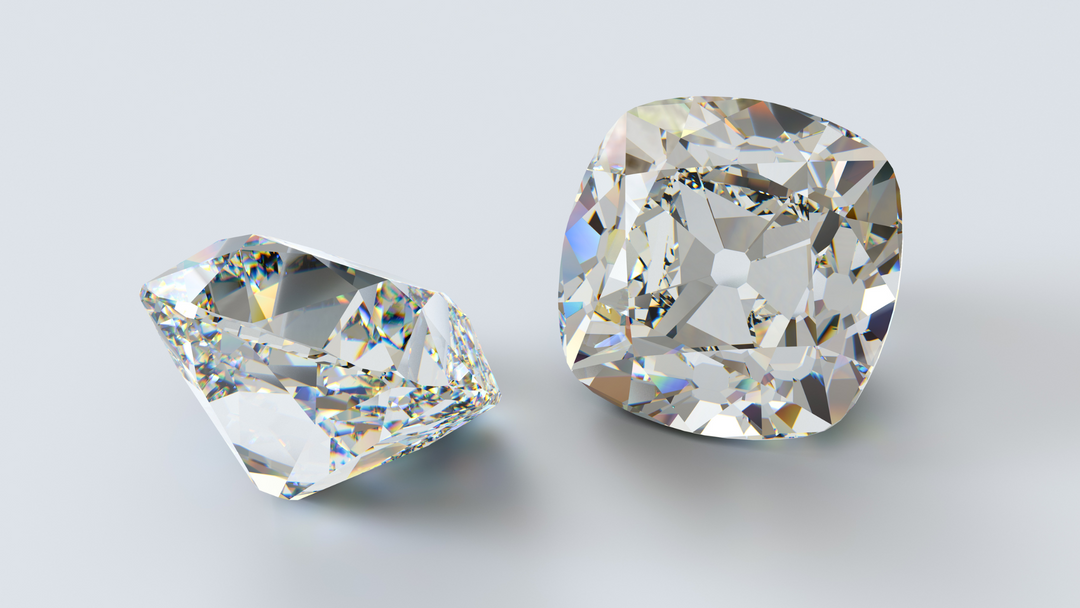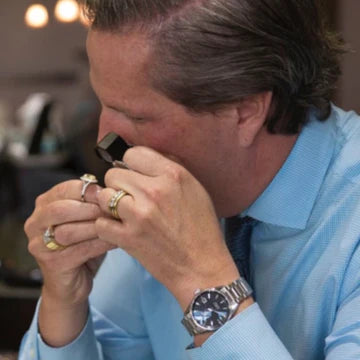How to Clean Your Jewellery at Home
From facials to haircuts, it’s safe to say that we are learning to do more at home than ever before. For some, that may leave you looking to your favourite jewelry to give it a bit of extra TLC while you’ve got some extra time on your hands… and jewelry OFF your hands!
We’ve put together our top tips to bring the sparkle back to your favourite jewelry pieces from the comfort of your own home.
What NOT to Do When Cleaning Your Jewellery
It’s no secret that there are home remedies for pretty much everything out there and DIY jewellery cleaners are no different.
While we’re sure this advice is well-intentioned, in our professional experience, the following at-home jewellery cleaning tips might do more harm than good to your most valuable jewelry:
- Do Not Use Solutions That Contain Baking Soda
A number of DIY jewellery cleaners contain baking soda. Baking soda is a mild abrasive that could scratch your metals or gemstones, so we do not recommend any solution that contains baking soda or abrasives of any kind. - Do Not Use Solutions That Contain Vinegar
Vinegar is quite acidic in nature and could enter the pores of any soft metals or gemstones, potentially damaging or removing the polish from your jewellery.
- Do Not Use Solutions That Contain Witch Hazel
This is another common ingredient we have come across in at-home jewelry cleaners. Witch hazel is slightly acidic and could damage your jewellery, similar to vinegar.
- Do Not Leave Your Jewellery In Any Type of Solution Overnight or For An Extended Period of Time
Most debris, dirt, and grime that can build up on your jewelry can be loosened up or removed within a few minutes of soaking in a solution. Putting your jewellery in any type of solution for more than five minutes still has the potential to damage your jewelry.
- Do Not Use an Old Toothbrush to Clean Your Jewellery
While it may be tempting to reuse an old toothbrush, most toothbrushes you have lying around are likely too hard on your jewellery and could cause scratches. In addition, any remaining toothpaste residue could act like an abrasive and further scratch metals and soft gemstones.
- Do Not Use Solutions at Extreme Temperatures
Some precious metals and gemstones don’t take very well to extreme temperature changes so it’s best to stick to more moderate temperatures.
What You CAN Do to Clean Your Jewellery at Home
Now that we’ve established what you shouldn’t be doing, let’s talk about how you can safely clean your fine jewelry at home:
Gold Jewelry
Of all of the at-home recipes for gold jewelry cleaner, we believe simple is best. Add a drop of dish soap to warm (not hot) water and submerge your jewelry into the solution for a few minutes.
For smaller pieces, we recommend putting them into a strainer so it’s easier to take them in and out of the solution.
After a few minutes have elapsed, swish the dish around to agitate the jewelry and dislodge some of the grime. Then, remove the pieces and place them on a soft cloth. Using a new baby toothbrush, go over any areas where some dirt may still be hiding.
Return all pieces of jewelry to the strainer and gently rinse with water to remove the soap water. Then, use a soft, lint-free cloth to dry and polish to help make your jewelry look like new again!
Gemstones
To help restore the lustre and sparkle of gemstones like rubies, emeralds and diamonds, add a drop of dish soap to sparkling water; the carbonation of the water helps loosen soil and debris trapped in facets and tight settings.
Using a new baby toothbrush, gently brush the stones, then rinse clean with water. You can either use a strainer and gently rinse under running water or put the items in a small dish of clean water.
Finish off cleaning your gemstones by using a soft, lint-free cloth to buff dry.
Pearls
Pearls are infamously porous meaning they can lose their lustre over time after collecting grime from day to day use. As such, they require extra care when cleaning them.
First thing’s first, do not ever soak your pearls – this could weaken the string causing it to break.
Start by laying your pearls out on a soft cloth, then make a mixture of warm water with a bit of shampoo. Take a new, clean make-up brush (ex. eye-shadow soft brush), dip it into the solution and go over each pearl.
After you have cleaned each pearl, take a damp, well-rung cloth to “rinse” off the shampoo solution. Allow your pearls to dry flat to ensure the string doesn’t stretch.
This method is also an effective way to clean other porous gemstones like turquoise and opals.
Take-Home Jewelry Cleaners
If you’re using a take-home jewelry cleaner like one you purchase at a jewelry store, be sure to read the instructions carefully. It should specify which types of jewelry the cleaner is effective for, so be sure to double-check the gemstone you are cleaning is listed.
In addition, be sure to rinse your jewelry after submerging it into the chemical solution, as the solutions are quite harsh and could continue to eat away at the finish of your jewelry.
—
Jewelry is special to everyone in some way, whether it be an heirloom piece, engagement ring or something you treated yourself to. It’s important to take care of your jewelry despite its price tag – besides, who doesn’t love restoring the like-new sparkle to your favourite pieces!?
If you ever have any questions on how to best care for your jewelry, feel free to contact the experts at J.H Young and we’ll be happy to lend a hand.




